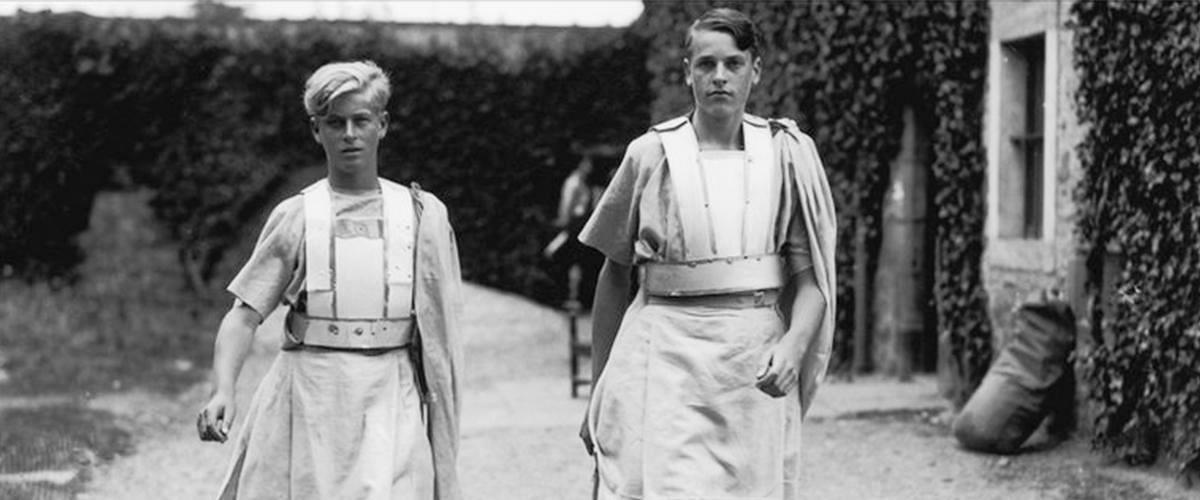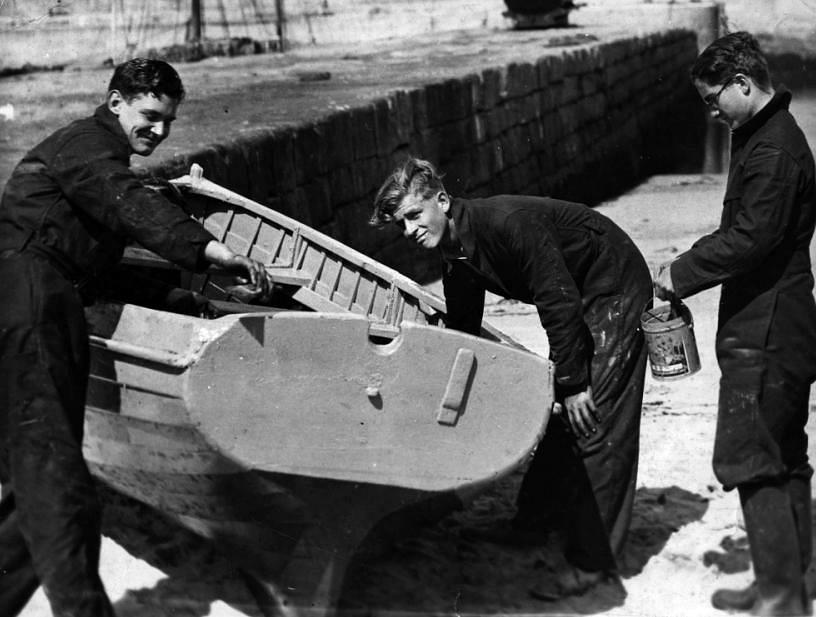HRH The Duke of Edinburgh: his Gordonstoun years 1934 – 1939
HRH The Duke of Edinburgh: his Gordonstoun years 1934 – 1939


Prince Philip, the Duke of Edinburgh was one of Gordonstoun’s first pupils, joining in 1934, the year the school was founded by German educationalist Kurt Hahn. Prince Philip had spent the previous year at Salem School in Germany (also founded by Hahn).
Prince Philip was a stalwart pupil at Gordonstoun; characterful, good natured, committed and always loyal to the school. In a letter to Reuters on the occasion of Prince Philip’s engagement to Her Royal Highness, Princess Elizabeth in 1947, Kurt Hahn – by then a personal friend – wrote: “When Philip came to Gordonstoun his marked trait was his undefeatable spirit. He enjoyed life, his laughter was heard everywhere and created merriness around him...In work he showed lively intelligence. Once he had made a task his own he showed meticulous attention to detail and a pride in workmanship which was never content with mediocre results.”
Prince Philip also flourished on the sports field, and was made Captain of the 1st XI hockey team at an unusually young age, because “quite early on, he could lead a team.” He went on to Captain the School’s Cricket 1st XI whilst also being an accomplished athlete, excelling in javelin and high jump. Prince Philip also shone on stage, performing in various productions of Shakespeare and taking a lead role as one of the three Kings in the annual Nativity Play, a tradition during Advent of both Salem and Gordonstoun.
But it was his participation in the school’s extensive outdoor education programme which allowed Prince Philip to develop his great passion for sailing and being at sea; and he seized every opportunity to spend time on the Prince Louis, the school’s schooner, named after his grandfather. In seamanship Prince Philip’s instructor found him to be a “cheerful shipmate and very conscientious in carrying out both major and minor duties. He is thoroughly trustworthy and not afraid of dirty and arduous work.” Prince Philip subsequently sat the Special Entry Examination to join the Navy and, in support of this successful application, his confidential report from Kurt Hahn stated that Prince Philip was a ‘born leader’ with ‘the greatest sense of service of all the boys in the school’
This sense of service and responsibility is something Kurt Hahn strove to imbue in all his students, and it remains an integral part of a Gordonstoun education. Prince Philip was an active member of the ‘Watchers’, a forerunner to the Coastguards and one of the school’s first community services. He took various positions of responsibility during his school career, culminating in his becoming Guardian – or Head Boy – in his final term; a role in which he was ‘universally trusted, liked and respected’.
In his final school report, Kurt Hahn wrote that Prince Philip was ‘never failing where he has to consider other people’s rights or interests. He does not know what boredom is when intent on discharging his duties and has the making of a first-class organiser, who is both kind and firm. A sense of humour and a rapid understanding of human nature have proved a great help to him in tasks of leadership.’
Prince Philip embraced the school’s unique educational ethos from his attendance of the school and thereafter, and his support throughout the life of Gordonstoun has been complete.
PRINCE PHILIP, GORDONSTOUN AND THE DUKE OF EDINBURGH’S AWARD
Gordonstoun’s founder, Kurt Hahn, was keen to extend his educational ethos to the local community and not just those in the School. He therefore set up the Moray Badge (the precursor to the Duke of Edinburgh’s Award) which started at Gordonstoun and Elgin Academy in 1936 and then spread to other schools in Moray. In the autumn of 1938, his last year at Gordonstoun, Prince Philip was awarded the Senior Silver Moray Badge.
The Moray Badge was so successful that Hahn wanted to make it a national award. In 1954, he consulted with Prince Philip and persuaded him to give his name to what became The Duke of Edinburgh’s Award in 1956.
Since then, the DofE has spread across the world to over 140 countries and millions of young people have benefited from their participation. It continues to be an exemplar of Kurt Hahn’s and Gordonstoun’s educational principles.
Of Prince Philip’s involvement in the Moray Badge, Kurt Hahn wrote; “He was much in demand as an instructor for the Moray Badge candidates who came from neighbouring villages in the evenings to be trained in jumping, running and throwing.” (Kurt Hahn letter to Reuters on the occasion of Prince Philip’s engagement to Princess Elizabeth in 1947).